Hibiscus is a beautiful flowering plant that graces gardens of all sizes. It has been admired for centuries, and many consider it to be a symbol of beauty and grace. But one common question asked by gardeners is whether hibiscus returns year after year or if it needs to be planted anew each season.
What Is A Hibiscus Plant?
Hibiscus is a genus of flowering plants in the mallow family. It includes both annual and perennial species with hundreds of varieties to choose from.
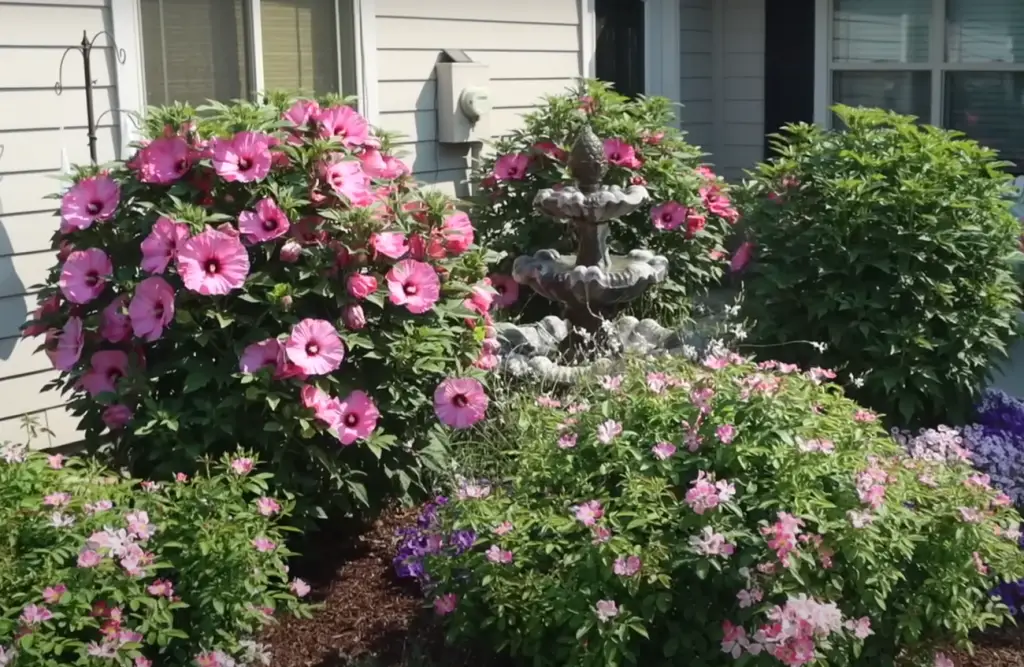
Hibiscus grow in many climates, but prefer warm temperatures and plenty of sun. They produce beautiful flowers that come in a range of colors including white, pink, yellow, red, and purple.[1]
Different Types Of Hibiscus
Hardiness
The hardiness of a hibiscus plant depends on the particular type. Annual varieties are not likely to return each spring whereas perennial varieties often come back year after year in the same spot. Some examples of annual hibiscus species include Hibiscus moscheutos and Hibiscus syriacus, while some common perennial species include Hibiscus rosa-sinensis and Hibiscus mutabilis.
Flowers
Hibiscus flowers come in a range of colors and sizes, depending on the particular species or variety. The most common hibiscus flower is the classic single-petal type, but double-petal varieties are also available. The flowers may be white, pink, yellow, red or purple and can appear in either clusters or as individual blooms.
Where To Grow Hibiscus
Growing Hibiscus In The Garden
Hibiscus plants can be grown in the garden or in containers. When planting in the ground, choose a spot that receives at least 6 hours of direct sun and has well-drained soil. Hibiscus is sensitive to cold temperatures, so it should be planted after the last frost of spring and harvested before the first frost of fall.
Planting Hibiscus In Pots
For those who want to enjoy hibiscus indoors or on their patio, it is possible to grow hibiscus in containers. Use a potting mix that is well-draining and make sure the container has plenty of drainage holes. Place the container somewhere where it will get 6-8 hours of direct sunlight each day. Water thoroughly whenever the soil feels dry to the touch and fertilize every other week with a balanced fertilizer.[3]
Hibiscus Care Indoors
When growing hibiscus indoors, the key is to provide it with plenty of light and to keep the soil moist. Place your hibiscus in a spot that receives at least 6-8 hours of direct sunlight each day.
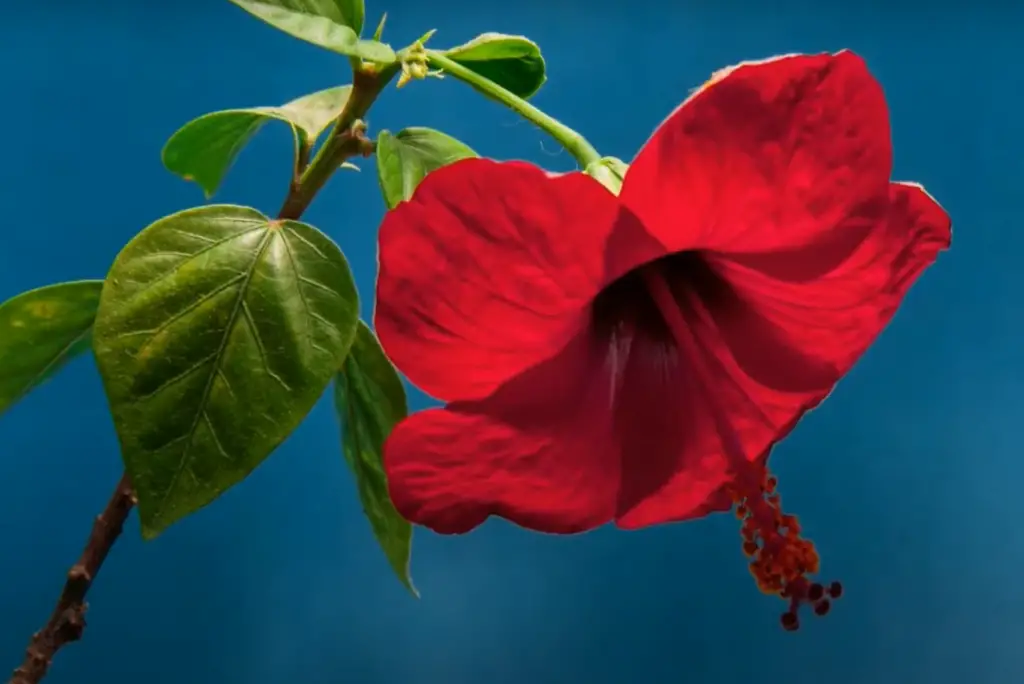
Water regularly, but do not overwater as this can lead to root rot. Fertilize every other week with a balanced fertilizer. As the days get shorter, you may need to supplement with grow lights to provide your plant with enough light.
How To Grow Hibiscus
Growing hibiscus requires a few simple steps:
- Choose the right location. Hibiscus needs plenty of sunlight and well-drained soil to thrive.
- Plant your hibiscus in either a container or in the ground. Make sure to use a potting mix that is well-draining and fertilize every other week.
- Water your hibiscus regularly and make sure to harvest before the first frost of fall.
- Prune your hibiscus regularly to encourage new growth and flowering.
- If growing indoors, supplement with grow lights in order to provide enough light as the days get shorter.[1]
When To Plant Hibiscus
Hibiscus plants should be planted after the last frost of spring and before the first frost of fall.
Hibiscus Planting Tips
When planting out, choose a spot that receives at least 6 hours of direct sun and has well-drained soil. Dig a hole that is twice as wide as the root ball and just deep enough so that the plant sits just below ground level. Place the hibiscus in the hole, backfill with soil and water thoroughly. If you are planting multiple hibiscus plants, space them at least 2 feet apart.[1]
Does Hibiscus Come Back Every Year?
The answer to this question depends on the particular type of hibiscus plant. Annual varieties will not come back each spring, but many perennial varieties can be expected to return year after year in the same spot.
In cold climates, it is best to mulch around your plants or cover them with a blanket when frost is expected.[1]Hibiscus Plant Care & Growing Instructions
Sunlight Requirements
Hibiscus plants require at least 6 hours of direct sunlight each day to thrive. When grown indoors, it is important to supplement with grow lights if natural light is insufficient.[4]
Watering Habits
Water hibiscus plants regularly, but do not overwater as this can lead to root rot.
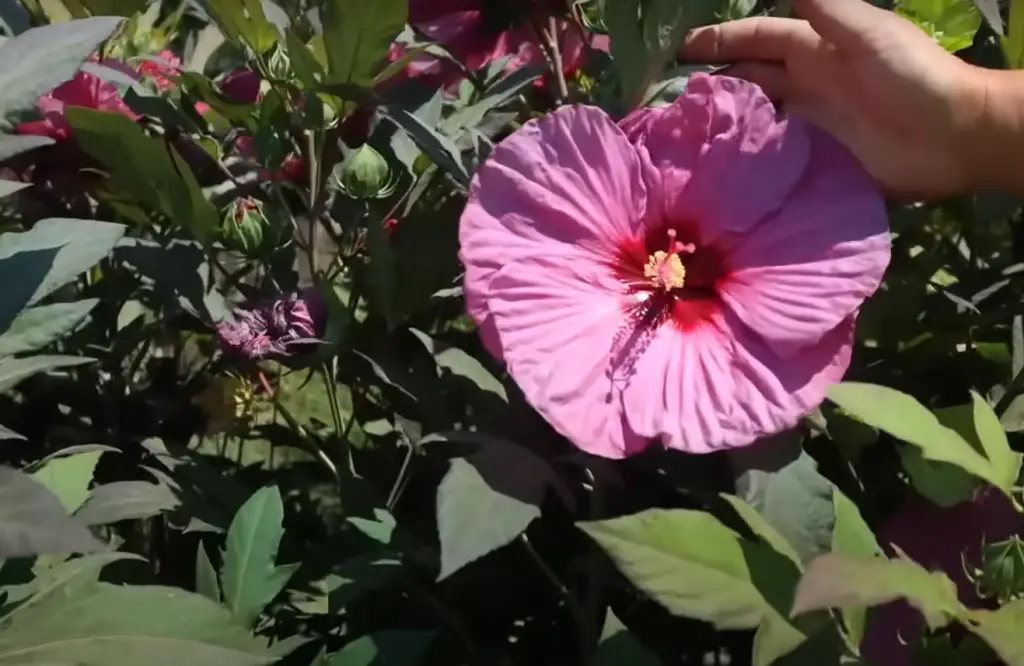
The soil should feel dry before you water again.
Humidity & Temperature Requirements
Hibiscus plants prefer warm temperatures and high humidity. Indoor hibiscus may benefit from a humidifier, especially during the winter months.
Temperature Tolerance
Hibiscus is sensitive to cold temperatures, so it should be planted after the last frost of spring and before the first frost of fall. In colder climates, mulch or cover plants with a blanket when frost is expected.[4]
Fertilizer & Plant Food
Fertilize hibiscus plants every other week with a balanced fertilizer. Be sure to follow the instructions on the package for best results.
Soil Type
The soil for hibiscus should be well-drained and loose. If you are growing your plants in containers, choose a potting mix that is specially formulated for hibiscus or other flowering plants.
Transplanting & Repotting
Hibiscus plants can become root bound if left in the same pot for too long. If you notice that your hibiscus is outgrowing its container, it’s time to transplant or repot into a larger one.[4]
Pruning & Deadheading
To encourage your hibiscus to bloom, it is important to keep the plant tidy and deadhead any spent flowers. Prune back unruly stems or branches in spring for a more compact shape.
Pest Control Tips
Hibiscus plants can be susceptible to pests such as aphids, spider mites, mealybugs and whiteflies. To control these pests, start by the plant with an insecticidal soap or neem oil solution. If the problem persists, use a pesticide specifically designed for hibiscus plants. Always follow the instructions on the label for best results.[4]
Dormancy & Winter Care
Hibiscus plants typically enter a period of dormancy during the winter months. This is normal and nothing to worry about. During this time, it’s best to reduce watering and fertilizing until spring arrives. You may also want to move your hibiscus indoors or provide some protection for outdoor plants in cold climates.
Hibiscus Plant Propagation Tips
Propagating Hibiscus By Cuttings
The easiest way to propagate hibiscus is by taking cuttings from existing plants. Choose stems that are at least 6 inches long and free from disease or pests.
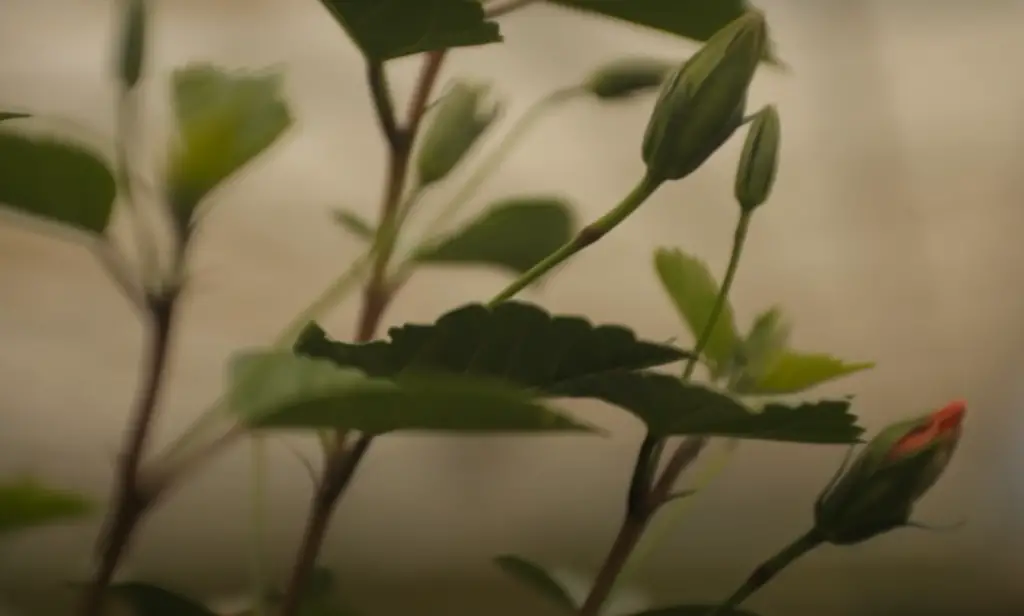
Use a sharp, sterile knife to make a clean cut just below the node (where leaves grow). Dip the cutting in rooting hormone and then place in a container filled with moist potting mix. Cover the container with plastic wrap to create a mini greenhouse effect. Place in indirect sunlight and check on it every few days to make sure the soil remains moist. After 6-8 weeks, new roots should be visible and your hibiscus cuttings will be ready for planting out.[2]
Propagating Hibiscus By Seeds
Hibiscus can also be propagated by seed. To start, fill a container with moist potting mix and lightly sprinkle hibiscus seeds over the surface. Cover the container with plastic wrap to create a mini greenhouse effect. Place in indirect sunlight and check on it every few days to make sure the soil remains moist. After 8-10 weeks, seedlings should be visible and your hibiscus plants will be ready for transplanting.[2]
Troubleshooting Common Hibiscus Care Problems
Yellow Leaves
Yellow leaves on hibiscus plants can indicate a few different problems. If the yellowing is accompanied by wilting, it could be due to overwatering or poor drainage. In this case, try well-draining soil and water sparingly. If there is no wilting present, it may be caused by too much direct sunlight, nutrient deficiencies or pests. Move your plant to a shadier spot and fertilize regularly. If pests are present, start by treating with an insecticidal soap or neem oil solution and use a pesticide as needed.
Leaves Turning White
White spots on hibiscus leaves can be caused by a few different things. If the white spots are accompanied by yellowing, it could be due to powdery mildew or other fungal diseases. To treat, spray your plant with a fungicidal solution. If the white spots are not accompanied by yellowing, it is likely caused by an insect infestation such as spider mites, mealybugs or whiteflies. Treat with an insecticidal soap or neem oil solution and use a pesticide as needed.
Losing Leaves
Hibiscus plants can sometimes drop leaves due to a few different causes. If the leaves are yellowing before dropping, it could be due to overwatering or poor drainage.
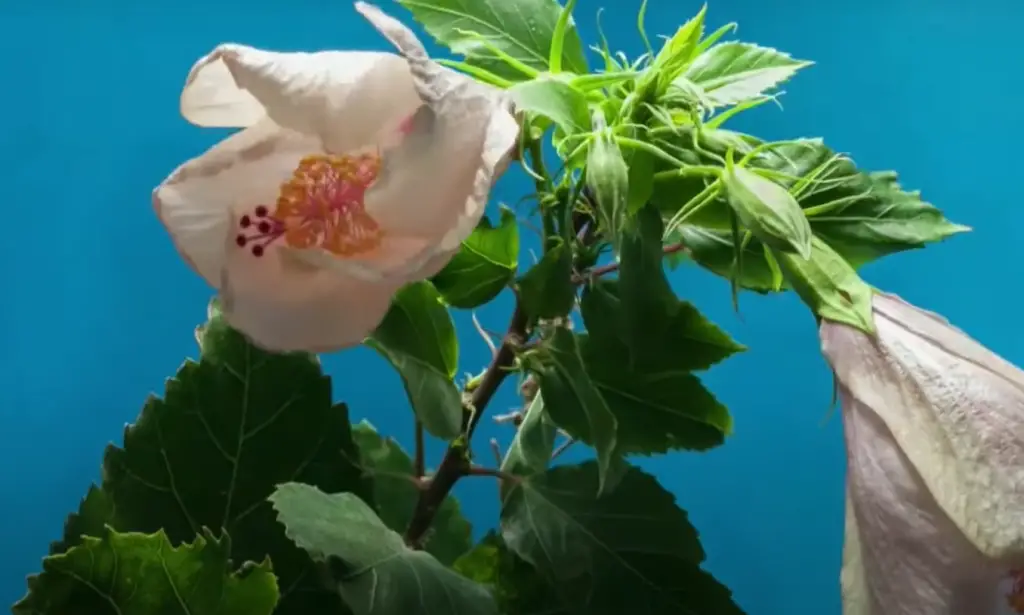
In this case, try well-draining soil and water sparingly. If there is no yellowing present, it may be caused by too little sunlight, nutrient deficiencies or pests. Move your plant to a sunnier spot and fertilize regularly. If pests are present, start by treating with an insecticidal soap or neem oil solution and use a pesticide as needed.[2]
Not Flowering
Hibiscus plants often fail to flower due to environmental stress.
If environmental conditions are ideal, it may be due to nutrient deficiencies or too much nitrogen in the soil. Fertilize regularly with a balanced fertilizer and reduce nitrogen if needed. You may also need to prune back unruly stems or branches in spring for a more compact shape. With the right care, your hibiscus should start flowering soon![2]FAQ
What do you do with a hibiscus in the winter?
In the winter, hibiscus plants enter a period of dormancy. During this time, it’s best to reduce watering and fertilizing until spring arrives. You may also want to move your hibiscus indoors or provide some protection for outdoor plants in cold climates.
Will my hibiscus come back after winter?
Yes, hibiscus plants typically enter a period of dormancy during the winter months. This is normal and nothing to worry about. With the right care and protection, your hibiscus should come back in the spring.
How do I know if my hibiscus is a perennial?
The answer depends on your climate and the type of hibiscus you have. Some species of hibiscus are perennial in warmer climates, while others may be annuals or tender perennials. You can check with your local gardening center for more information about the particular variety you have.
What is the lifespan of a hibiscus plant?
The lifespan of a hibiscus plant can vary depending on the type. Some species may only last a few years, while others can live for decades with proper care and protection. The key is to provide your hibiscus with adequate sunlight, water and other essential nutrients. With the right care, your hibiscus should last for many years to come!
How do I save my hibiscus plant for the winter?
To save your hibiscus plant for the winter, it’s best to reduce watering and fertilizing until spring arrives. You may also want to move your hibiscus indoors or provide some protection for outdoor plants in cold climates. For extra protection, cover the soil with mulch or a blanket of pine needles. This will help insulate the soil and keep the roots warm during cold winter nights.
Can hibiscus survive indoors?
Yes, hibiscus plants can survive indoors if given the right care. Make sure your plant is getting enough sunlight and has the right humidity levels. You may also want to adjust watering, fertilizing and pruning schedules accordingly for indoor plants. With proper attention, your hibiscus should thrive indoors!
Why didn’t my hibiscus survive the winter?
There are a few reasons why your hibiscus may not have survived the winter. It could be due to freezing temperatures, overwatering or poor drainage. If you had an outdoor plant, it may have been too exposed to cold winds and frost. Make sure you provide adequate protection for outdoor plants in cold climates and check that your soil is well-draining. With the right care, your hibiscus should make it through another winter!
Is it normal for hibiscus leaves to fall off in winter?
Yes, it is normal for hibiscus leaves to fall off in winter. During this time, hibiscus plants enter a period of dormancy and may drop some leaves as a result. This is nothing to worry about and you should see new growth once spring arrives. Make sure your plant gets enough sunlight and has the right humidity levels during the winter months. With the right care, your hibiscus should stay healthy and happy!
Useful Video: Update Tour of the Hibiscus We’ve Planted the Last Few Years! 🌺😍 // Garden Answer
Conclusion
Hibiscus plants are a beautiful and easy-care addition to any garden. With the right care, they can come back every year and make an impressive show of bloom for many years to come. Make sure your hibiscus gets enough sunlight and has the right humidity levels. Water sparingly in well-draining soil and fertilize regularly with a balanced fertilizer. In cold climates, make sure you provide extra protection for outdoor plants in winter and adjust watering, fertilizing and pruning schedules accordingly for indoor plants. With the right care, your hibiscus should come back each year with beautiful blooms!
References:
- https://getbusygardening.com/hibiscus-care/
- https://www.bhg.com/gardening/flowers/perennials/can-my-hibiscus-come-back-from-freezing-temperatures/
- https://www.fallsgarden.com/do-hibiscus-come-back-every-year/
- https://nurserylady.com/will-hibiscus-plant-come-back/





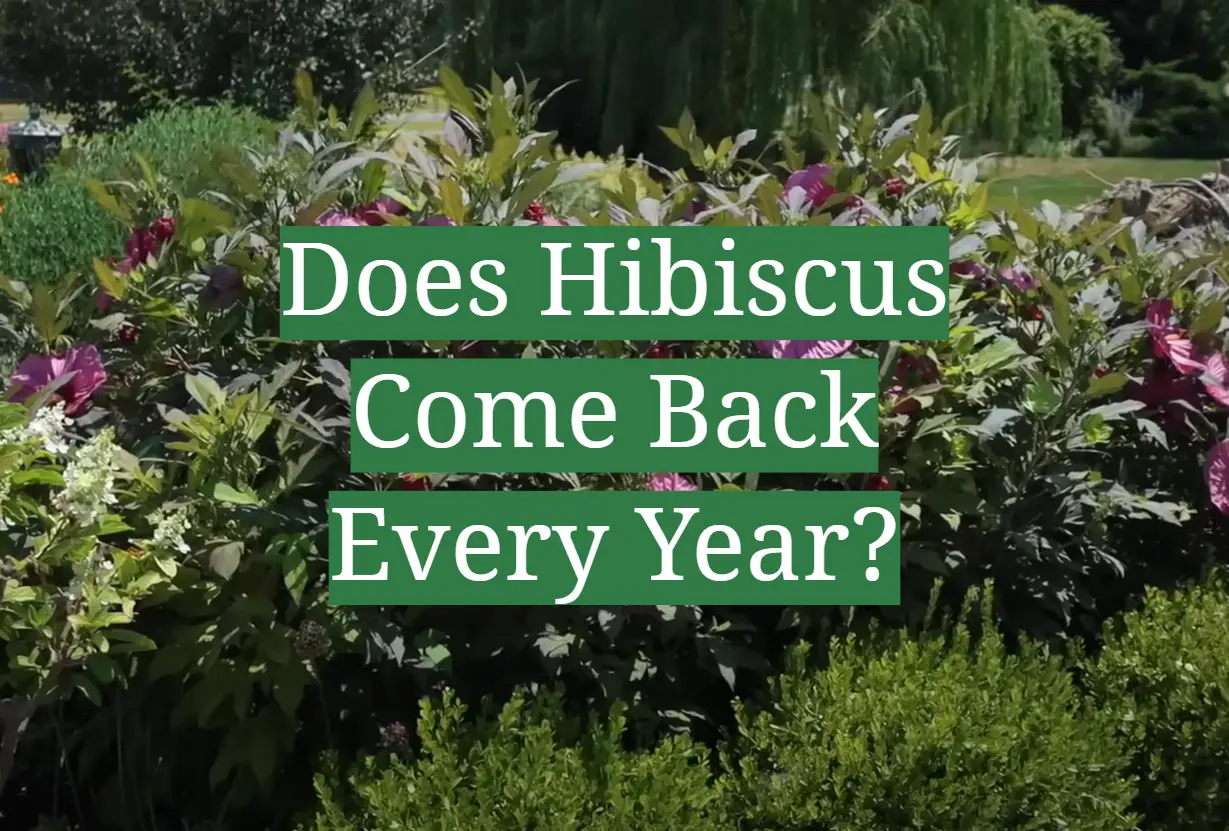




Leave a Reply
View Comments